Yoyo Chinese Review: Worth the Sticker Price?
Quick Review
Summary: YoYo Chinese is an online Mandarin learning platform. They market themselves as a convenient and comprehensive way learning and understanding Mandarin. They offer 6 units, all being broken down into smaller units with video lessons, practices, downloadable audio and text files, flashcards, and quizzes. YoYo Chinese is thorough language learning site whose only downfall is the lack of in depth grammar instruction.
Pros:
- Comprehensive: the lessons are well thought out and include a generally well rounded education from beginner to intermediate mandarin.
- Resources: includes plentiful resources to aid in studying.
- Value: the price point is a bit steep, but includes a lot of benefits.
Cons:
- Repetitive: lessons, quizzes, and practices can get a bit repetitive.
- Grammar: lacks in depth grammar knowledge in lessons
In Depth Review
Throughout my language learning process, I’ve tried all different kinds of platforms for learning; self-study through books, websites, apps, and of course, classes offered through my university. That being said, aside from university courses, YoYo Chinese may be one of the best Mandarin learning resources out there. It seems that YoYo Chinese has done a good job of adapting the website for the average, busy, adult just trying to pick up a second language. Their ‘study on your time’ approach really adapts to adult life, making studying and learning that much easier.
Lessons and Courses:
YoYo Chinese offers 6 different courses:
- Beginner Converstaional,
- Chinese Character,
- Intermediate Conversational,
- Chinese Character II,
- Upper Intermediate Conversational,
- Chinese Character Reader.
As you can see, the course curriculum is designed with two main curriculums; conversational skills and character learning. The two systems are separate, but compliment each other nicely. According to the official recommendation, the learners should develop a foundation in spoken Chinese before starting to learn Chinese characters. Thus, Level 1 of the Beginner Conversational Course should be the first lesson. It‘s better to learn the Characters Course alongside the corresponding Conversational Course.
The most unique aspect of the Conversational Course is the “on the street” clips in each level. The real, natural conversations are mixed into the lesson flow. The style ranges from basic Q&A to interviews, and even to an unscripted conversation with Chinese people. The difficulty is increased gradually with each lesson, which brings you into a real practical Chinese language environment. The supplement materials are not only for fun, but also for getting out of the textbook.
Each Course is broken down into 6 different levels, which is then further broken down into roughly 13 different units.
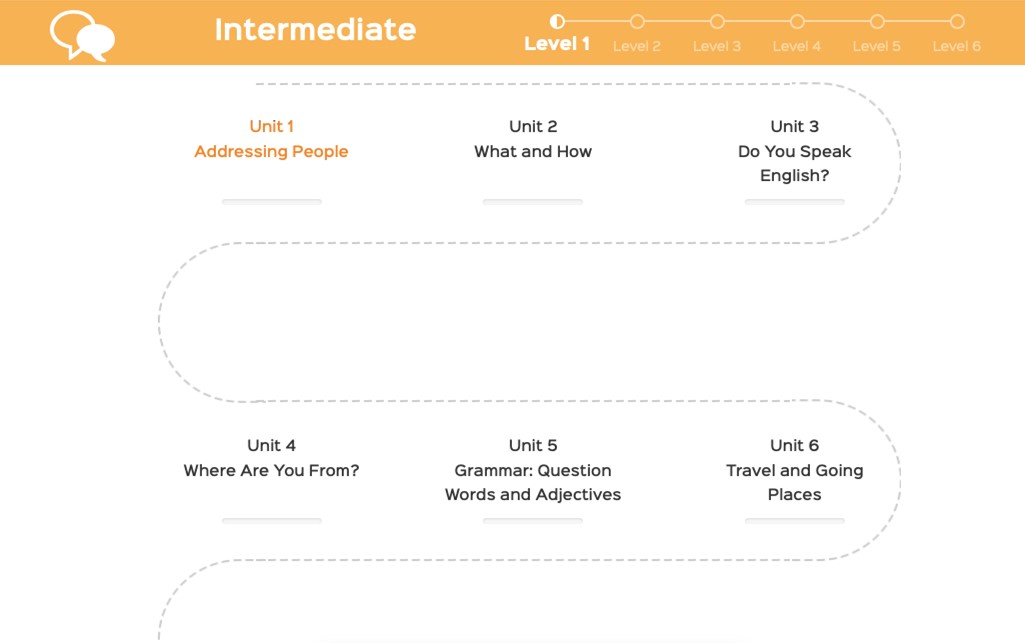
Every unit is broken down further into small video sections, roughly 3-6 per unit. For the beginning lessons, the videos are typically short, 2-4 minuets roughly. For the longer units the videos can get up to 10 minuets long.
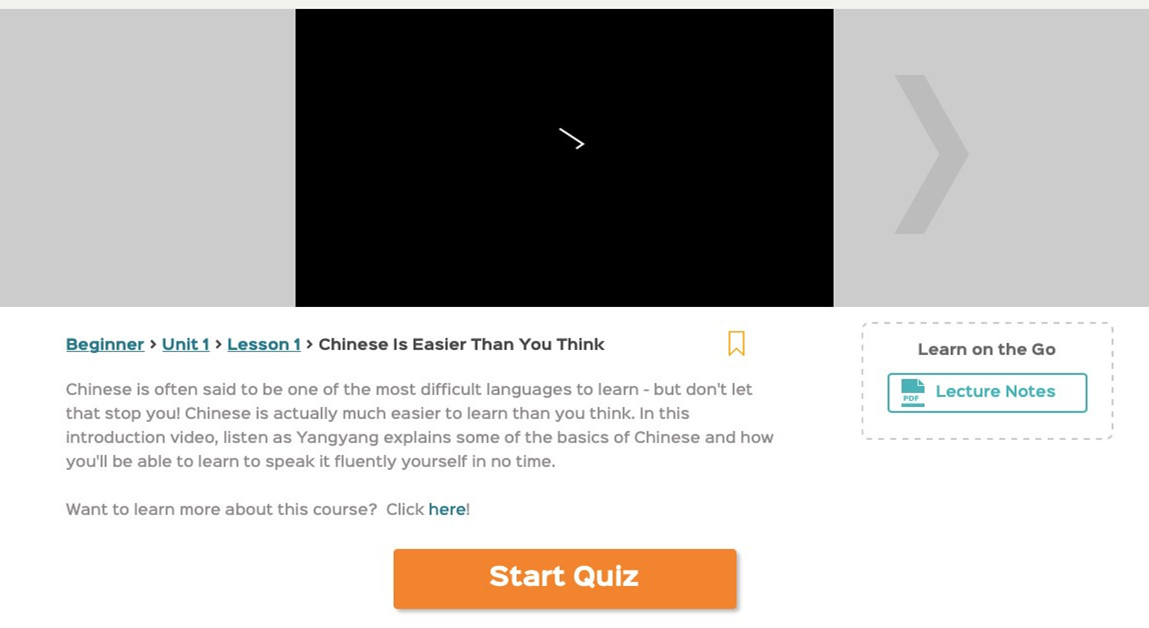
The videos introduce and explain the concepts in a way that native English speakers understand. After the video, there will be a button that says ‘Start Quiz’ or ‘Begin Practice’. Most units will have you practice the concepts that were introduced and some will then quiz you on those same concepts. Also included with each unit is lecture notes, or a downloadable PDF file that goes over the vocabulary and sentences that were introduced.
The lessons themselves are pretty informational and digestible. The speaker, Yang Yang, does a good job of explaining the concepts, especially in the beginning lessons of tones and pinyin. In the earlier lessons, the videos are typically her explaining the concepts and then reviewing the previous lesson a bit. In the later lessons, she begins the video with a clip of native Mandarin speakers, and the rest of the video is a break-down and explanation of that clip. The lessons focus on every day, informal Mandarin, which in my opinion, is great. With university courses, and other platforms, there’s a focus on academic and formal Mandarin, but when put in a real life situation, only about 2/3 of what you learn is applicable. The only downside I see to the lessons is there’s no formal walkthrough on grammar included in the lessons. This is found on a separate page. In my opinion, grammar should be taught within the lessons so you see when/how it is applicable.
Resources and Blog:
YoYo Chinese also has a really nice feature in terms of their resources. The resources page has three different options: The PinYin Chart, the Reference Videos, and The Download Center. The PinYin Chart is a comprehensive chart of all the different sounds found in Mandarin. It’s broken down by letter and ending. Each sound can also be clicked on. When clicking on it, you can listen to the sound spoken with all four of the different tones. It is a great resource to use for listening and practicing with speaking.
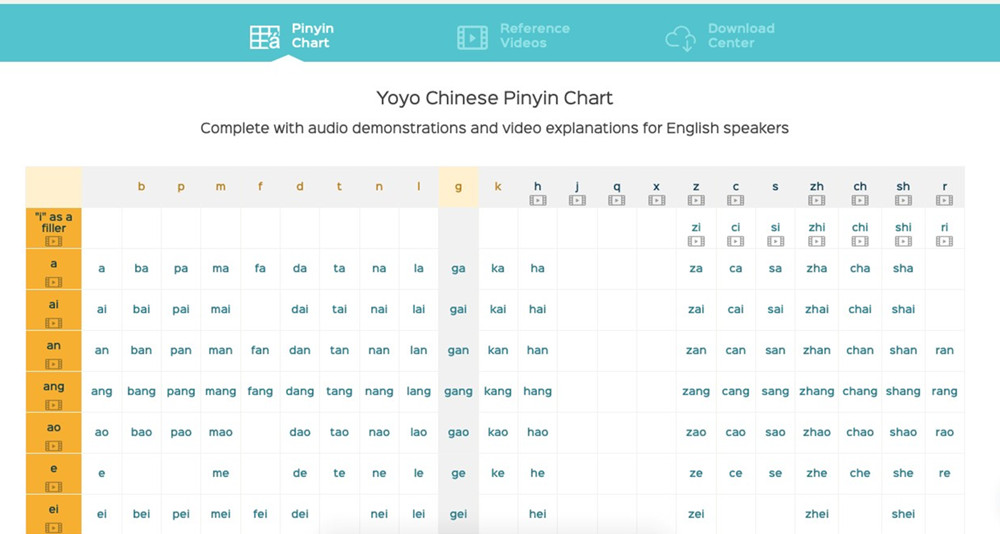
The second part of the resource center is the Reference Videos. This page offers 3 videos that explain Mandarin grammar. There are 12 different lessons, each containing a few videos. They range from Chinese Word Order to The ba (3) 把 Structure. It creates a good foundation to continue learning, but only touches on grammar. This section also offers tips and handouts to practice more specific things.
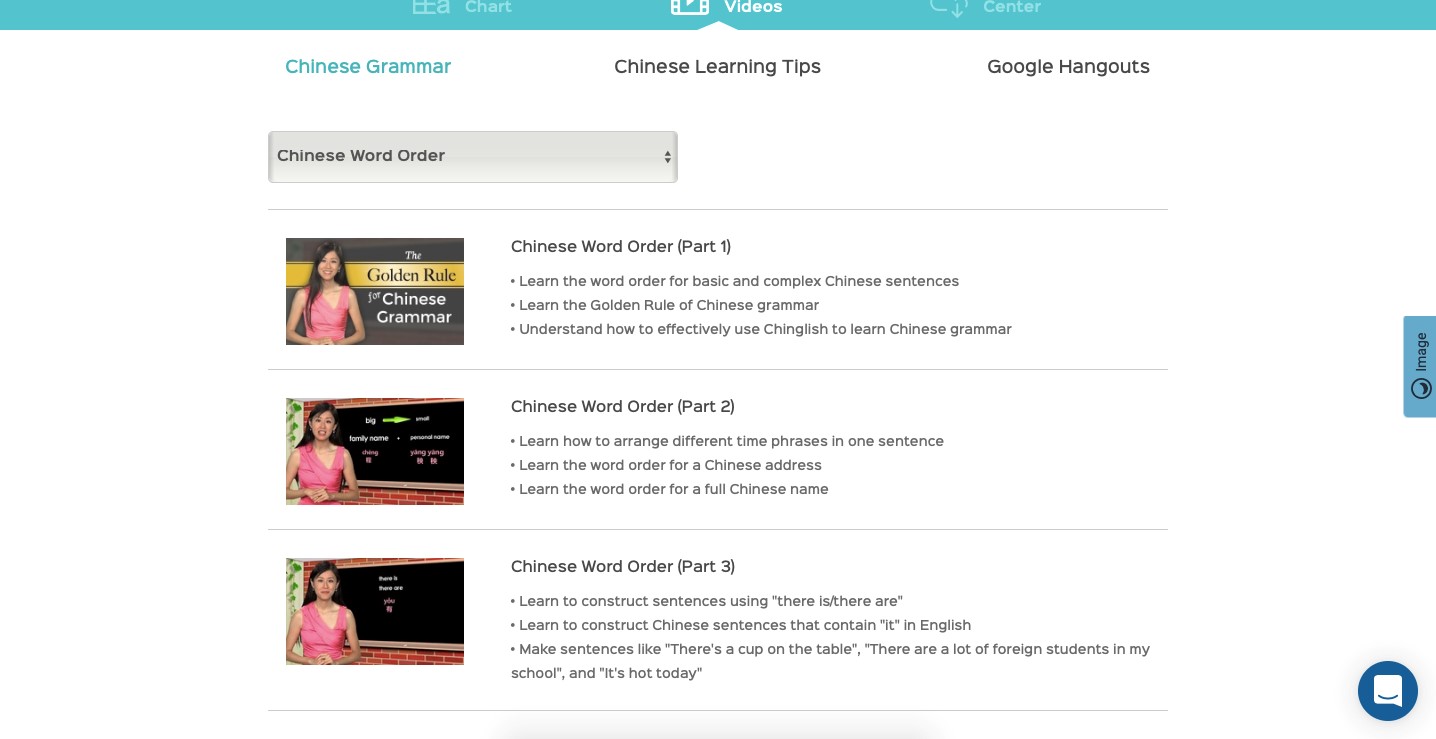
Lastly, the resource page offers the Download Center, which is just a comprehensive list of all the lecture notes. It includes the downloadable PDF files, audio lessons, flashcards and tips.
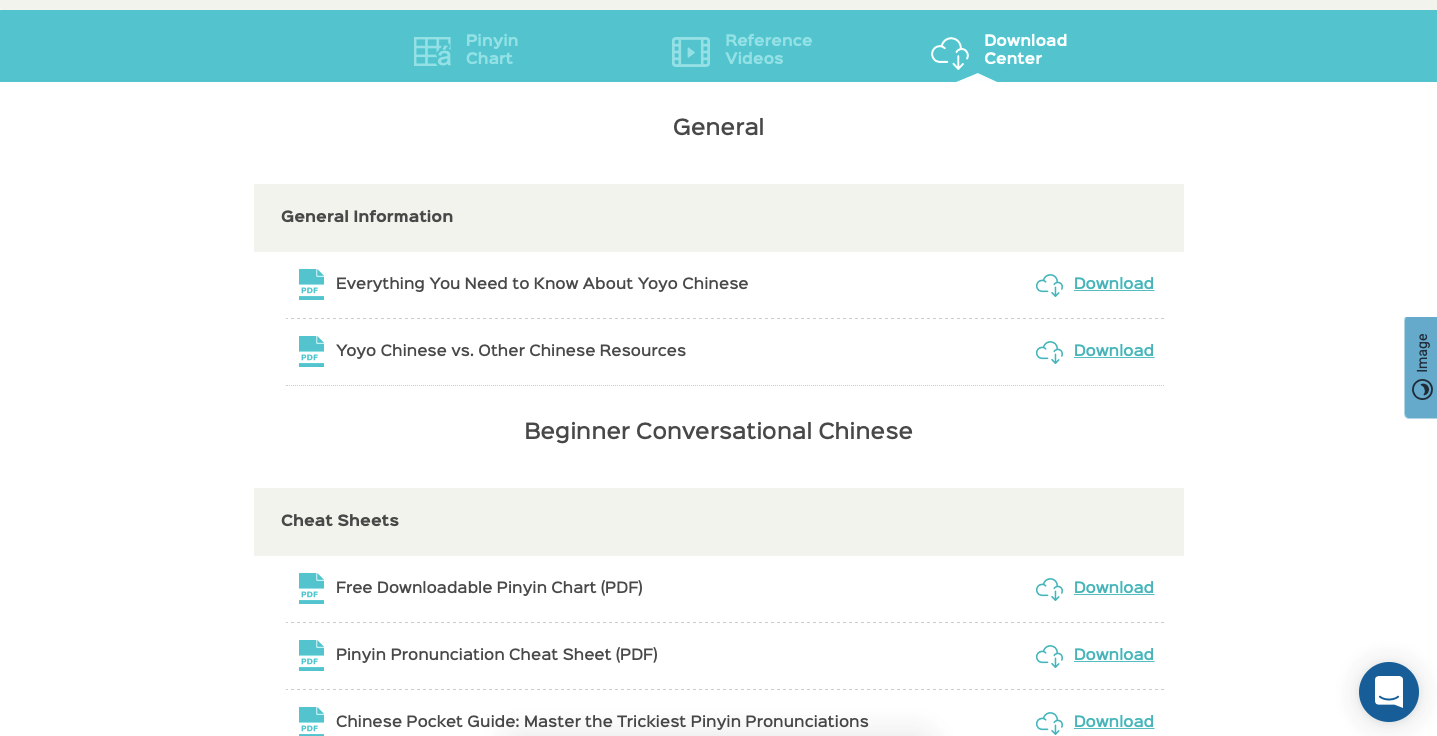
YoYo Chinese also offers a blog where they frequently upload articles about Chinese culture.
Store and Price Point:
There are two payment options for gaining access to Yoyo Chinese:
Subscription: 19.99USD/month or 89.94USD/6 months.
One-time Payment: 299USD for lifetime access.
Save 10% on a sale to Yoyo Chinese with the promo code “DIGMANDARIN10”.
Even though the price point seems steep, it is well worth it. For the price, the lessons, flashcards, all the resources, and the blog are all included. With such a comprehensive lesson plan for less than $150, it is a good deal and worth the money.
Conclusion:
In conclusion, YoYo Chinese is a great platform. With a comprehensive lesson break down, learners get a well-rounded instruction into their Chinese learning. For the price, a ton of information is included. With the option of video, audio, and PDF versions of lessons, there is an option for nearly every learner. If you have the money, I would recommend YoYo Chinese to begin, or continue, your Chinese learning journey.
A few years ago, DigMandarin also conducted an interview with Yangyang Cheng, the founder of Yoyo Chinese
Yangyang Cheng, celebrity Chinese teacher and former TV host, is the founder and host of Yoyo Chinese. Born and raised in Beijing and a resident of the U.S. for many years, Yangyang has one foot in both the East and the West and has become an educator with a rare multi-cultural perspective.
She got her start teaching Chinese on Youtube, creating more than 300 language learning videos with over 22 million views.
Join me in my chat with Yangyang below as she talks about her biggest challenges, newest projects and the most important thing to avoid when learning Chinese.
Yangyang`s Experience
DigMandarin: How did you start to teach Chinese?
Yangyang: I actually started my career as a financial auditor and then worked in Hollywood for a little while. But my greatest passion has always been language teaching so I started to teach English to Chinese speakers online. The videos I made became really popular because I used shows like “Friends” and “Sex and the City” to teach English the way real people talk. I then expanded my teaching to include tutoring English speakers in Chinese.
I found that many English speakers had trouble finding Chinese teachers they could relate to who could explain the material in a clear and concise way. I saw that their textbooks and learning materials were full of complicated jargon and confusing explanations, no wonder they were experiencing frustration!
I realized that while there are already lots of great English speakers to teach Chinese, there are not nearly enough great Chinese teachers in the west. So I set out to apply my language teaching passion to teaching Chinese to English speakers in a way that is fun and easy to understand.
I spent hours upon hours reading through every textbook and grammar guide for Chinese language, compiling every explanation for every concept in Chinese. My goal was to create a curriculum using the best explanations, tailored to fit the specific needs of native English speakers. In addition, I began teaching at two universities and expanding my tutoring so I could test out my new teaching system on individual students and in a classroom setting. After years of research, I combined my tried and true teaching methods with my experience as a TV host and created Yoyo Chinese – an online education company that uses short and fun videos to teach Chinese to English speakers.
DigMandarin: You had a lot of very famous students. Who is the most impressive?
Yangyang: Eliza Coupe really impressed me during the filming of her movie “Shanghai Calling.” When we began, she couldn’t speak a word of Chinese and I had two weeks to get her sounding like she had lived in Beijing for 6 or 7 years. She accepted the challenge and worked very hard to fill this tall order. I was able to give her lots of shortcuts to teach her how to speak Chinese, but mastering the tones and pronunciation was definitely the hardest part. In the end, I taught her to sing out the tones like a song. We played a game where we’d sing out just the tones and then add the sounds afterwards. This method proved effective and in the end I was blown away by Eliza Coupe’s hard work and success in learning Chinese.
About Yoyo Chinese
DigMandarin: Now which area are you focusing on?
Yangyang: I am really excited about the up and coming popularity of Google Hangouts on Air. We have conducted a few of these live Chinese lessons and our very first one had nearly 1,000 live viewers from around the world. Basically, I collect questions from people before the Hangout begins and then I teach a lesson and answer their questions live.
Recently, Google has released some new features that will allow us to conduct this entire Question & Answer process live on air, which we plan to do very soon. The goal with the Hangouts in addition to real, human interaction is to show people that they really can benefit from these lessons right away. I try to demonstrate sounds and use lots of pictures in my explanations to create the “aha” moment that every student finds so encouraging.
At first, I was a little nervous about venturing into this unknown territory of Google Hangouts. In my recorded video lessons, I get to do retakes and edit out all my mistakes. When I am teaching live, everyone will see my mistakes and I only get one chance to explain things clearly. But my students have been really encouraging and supportive of this new way of teaching and gradually I have gotten used to it and even enjoy these live events now.
It’s been a really rewarding experience to broadcast my Chinese lessons live and to see everyone’s reactions as it is happening – I am truly excited about the future of these Live Hangouts for Yoyo Chinese.
DigMandarin: What is the biggest challenge for you among so many types of video?
Yangyang: The two hardest series to create have been Chinese on the Street and Chinese Grammar. Chinese Grammar was created completely from scratch. I spent years studying every Chinese grammar book to find the best explanations and examples and from that I created a series of 70 lessons. This series has probably been the most challenging mentally and has taken the longest amount of time to complete.
When teaching in video format, there are lots of factors to consider besides just explaining everything well. I had to research and decide how to present the explanations on video, how to record it, how to light it. Everything needed to be put together to form one cohesive video series and it was a really time consuming, challenging process.
DigMandarin: Is Chinese on the street one of your new projects?
Yangyang: Yes, Chinese on the Street is one of our newest projects. We launched the series a few months ago and have had really great feedback from our students. The series helps them improve their listening comprehension and get used to hearing Chinese spoken the way real people talk.
Unlike in the real world, if our students don’t understand something, they can replay the video and take a look at the accompanying lecture notes until everything makes sense and they become accustomed to hearing everyday, spoken Chinese. This way of studying really helps prepare our students to enter the real world of spoken Chinese where there are no lecture notes or replays!
Our team in Shenyang, China conducts interviews with people on the street about various topics covered in our other courses. They ask people questions like “What’s your name?”, “Can you speak Chinese?” and “What do you like to eat?” They ask the same question to each person but often hear a different way of answering each time. Just like in English, some people will say “Yeah” and others will say “Yes”. This way, our students can get a sense for what a real conversation sounds like in Chinese without ever setting foot in China.
We started this series because so many English speakers say the biggest difficulty in their Chinese studies is the ability to understand native speakers. Even if they can speak and ask questions confidently, their confidence is all but lost when they can’t understand the answers to their questions.
One of the reasons listening comprehension is so difficult is because people speak much faster in real- life conversations than a teacher, like myself, does when teaching. They also tend to use regional accents or omit words. Small variations in speech can really trip up a non-native speaker.
With Chinese on the Street, our students can practice and get used to all these variations in a low stakes setting so that they will be fully prepared succeed in the real world.
DigMandarin: Well, what is your future plan for Chinese?
Yangyang: Learning Chinese online is still a relatively new concept and an emerging field. We aim to stay on at the forefront of this field and keep innovating new and improved ways for people to learn Chinese. We still have lots to explore and learn and we continue to try new and different ways to reach our students.
Competitive Advantage of Yoyo Chinese
DigMandarin: What advantages do you think you and your team have?
Yangyang: My years living in the U.S. have been instrumental in improving my English speaking ability and knowledge of Western culture. I think a teacher is one of the most critical factors for a student studying any subject. My ability to relate to native English speakers and see things from their perspective helps to bridge the gap between Chinese and English. This relationship really helps my students see that Chinese is actually a conquerable language after all.
DigMandarin: Why do you think your Chinese videos are better than other Chinese videos?
Yangyang: I think the main challenge all video content creators face is how to maintain a human element when there is a screen between my students and myself. I have tackled this issue by presenting my lessons as a real, authentic person. I keep a relaxed tone and try not to sound really polished and rehearsed. I really try to relate to my students by using demonstrations and explanations that are easy for them to understand and maybe even make them laugh. We pay close attention to details and try to make our explanations interesting and easy to remember.
DigMandarin: You said that you had an English speaker`s perspective; what do you think it is?
Yangyang: Well, understanding an English speakers’ perspective means knowing in advance what kind of things they will find confusing about Chinese.
For example, the word bǎ (把)doesn’t really exist in English the way it does in Chinese. So naturally, English speakers are confused by how to use this word. I am able to take what they already know about how English is spoken and use that to help them understand the use of the word bǎ. If something is being moved from point A to point B, then that should raise a red flag in your head to use bǎ. I show my students lots of examples and clearly tell them when they must use it and when they can’t use it.
Most importantly, I can anticipate the kinds of mistakes English speakers will make when trying to translate from English to Chinese. For example they might say wǒ shì hěn hǎo (I am very good), which is the literal translation from English to Chinese. But actually, the word “to be”, shì in this case is not necessary because in Chinese adjectives function as verbs, “good” is already “to be good”.
I know they will make this sort of mistake before they even make it and I can correct the mistake before it happens. This way, they learn the correct usage the first time around. I have spent so much time teaching English speakers, I know where they will have problems before they even know, and this kind of thing really makes my students feel that I understand their perspective.
How to Best Use Yoyo Chinese Videos
DigMandarin: I saw your videos. Why are so many videos limited to 5 minutes?
Yangyang: Well, in my experience the audience for online video has a much shorter attention span. We want to be sure to keep our students focused and engaged for the whole lesson so we keep them short and sweet.
Our scripts usually start out much longer than this and we work very hard to simplify concepts. If a student can understand a concept with two sentences, we don’t want to waste their time saying 4 sentences!
Our students give us great feedback on this format. They like that they can crunch a lesson or two and be productive even if they only have a short amount of time here and there throughout the day. We have found that this style is perfect for modern, busy people who don’t have time to sit down and watch a whole 60 minute long lesson in one go.
DigMandarin: What do you think is the best way to use your video to learn Chinese?
Yangyang: I think the best answer to this question comes from my students themselves. I talked at length with many of them to find out what situations help them learn and what circumstances make them feel frustrated and ready to give up.
Learning a language is a very human experience and human nature must be considered when putting together a study plan. The learning process is much more like a marathon than a sprint. A person accumulates vocabulary and grammar etc. over a long period of time and has to take breaks to let it all sink in.
Especially since Chinese is such a popular language to learn right now, lots of people jump right in with ambition to study two hours a day and become fluent in just a few months. But after keeping up this high intensity for some time, many people just give up. A lot of people say that they give up because it is exhausting to always be concerned about whether they are doing the right thing, learning the right way or following the correct path to fluency. This is especially common amongst people who try to cobble together their own collection of resources online. Learning a language is hard enough, so why take on the burden of learning how to learn a language as well?
This issue of how to learn a language is why I think students need a language-learning path to follow. With an established plan, they can track their progress and know what direction to follow. They know in advance what they can achieve in a certain amount of time.
I provide my students with a daily study guide that tells them exactly which videos to watch along with which supplemental materials such as lecture notes or guided audio review. This plan takes only half an hour a day, 5 days a week. If my students follow this study guide faithfully, they can achieve conversational fluency in only 6 months. All along the way, there is review and through use of Chinese on the Street the students can test their knowledge and make sure they are learning the material as thoroughly as they should. Removing the issue of how to learn allows students to focus solely on learning.
Learning Tips about Chinese
DigMandarin: Can you recommend some good self-study materials for Chinese learners?
Yangyang: For starters, textbooks are not ideal for learning Chinese. If a student is learning Chinese at school, the textbook is often based around exams and other arbitrary methods of tracking progress. While a textbook can be a helpful visual aid, it lacks the ability to teach listening. I actually think that learning to speak Chinese and learning to read/write Chinese are two separate endeavors. The character writing process can be so overwhelming and ultimately ware down a person’s interest in Chinese. In the beginning, I recommend students focus only on spoken Chinese.
For those who are interested in learning Chinese characters, I recommend two books, “New Approaches to Learning Chinese“ and “Rapid Literacy In Chinese”. Though these days, it really makes the most sense to focus on reading and typing rather than reading and hand writing.
DigMandarin: Then what do you think a Chinese learner should avoid most?
Yangyang: I think a Chinese learner should avoid trying to follow too many different programs at once. There are so many resources out there – blogs, flashcards, videos, language learning programs – that it can be tempting to try to absorb everything all at once. Eventually, this all-or-nothing process catches up with people and it shakes their enthusiasm and resolve to learn the language. It is much better to find one program or one tutor and stick to that, especially in the beginning.
Additionally, I can’t say it enough: practice, practice, practice. Even if you only know two words, get out there and say them to everyone who will listen. There is no better language-learning tool than using that language to truly communicate with others.
If you want to know more about Yangyang and her Yoyo Chinese, Please feel free to leave your comments here. Let`s looking forward to more great videos and programs.


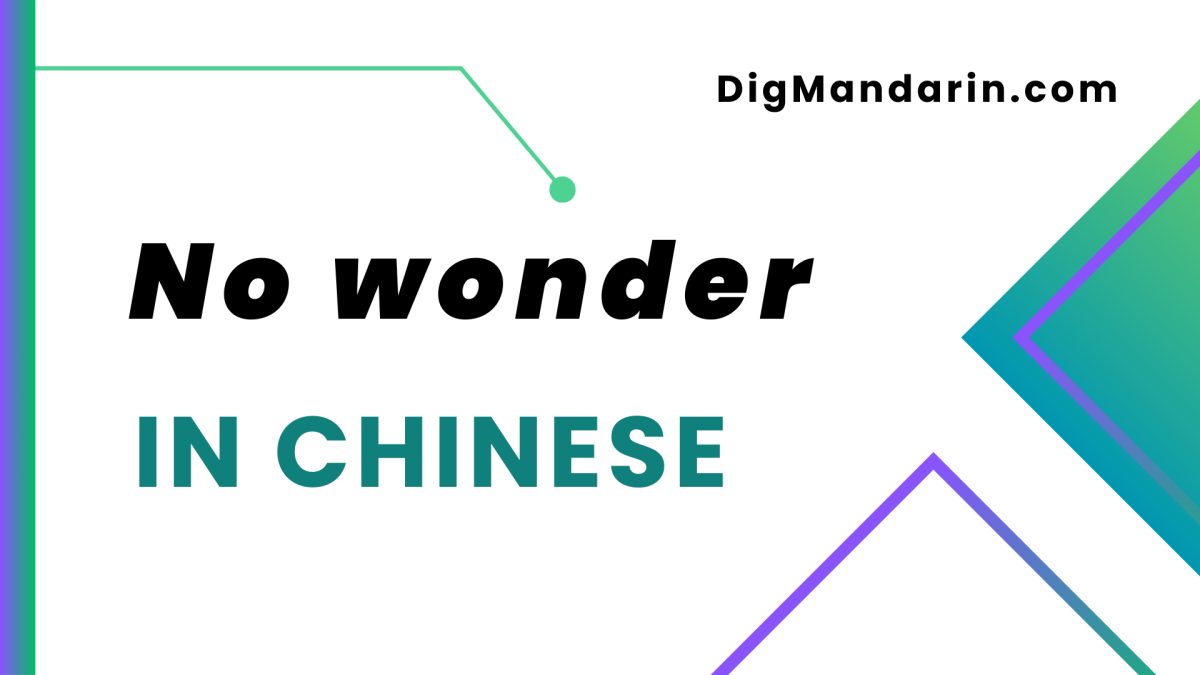

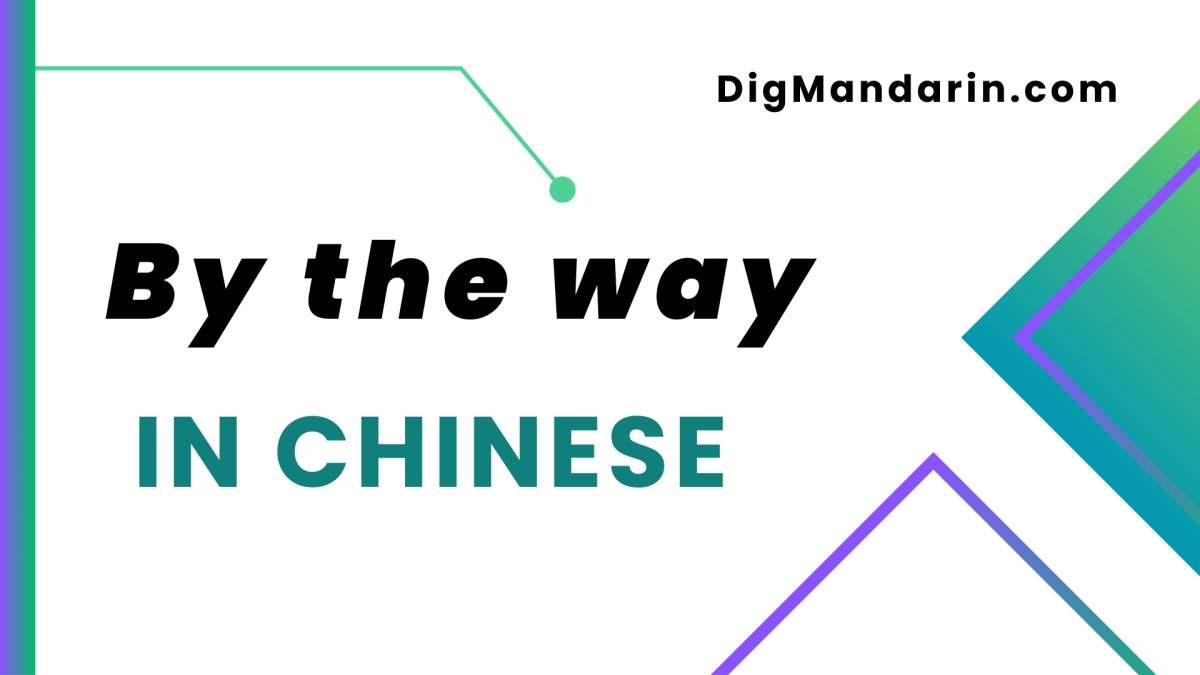
Great interview! I am a student of YoYo Chinese, and I supplement that learning with DigMandarin. Learning Chinese has opened up a whole new world to me. I have the great advantage of having found a local Chinese friend to converse with. We are helping each other and learning a lot more than language! 加油!